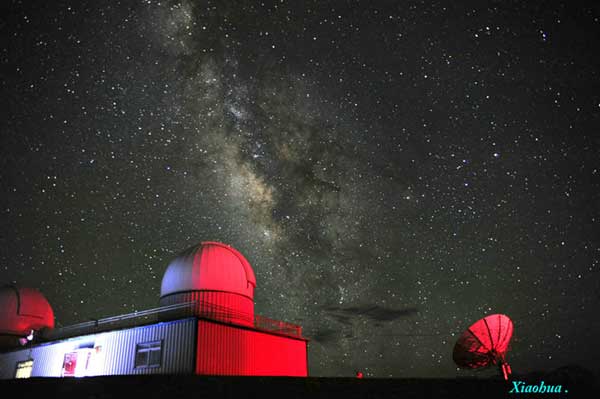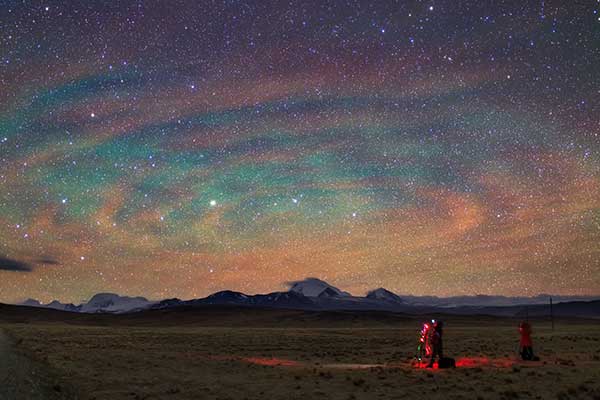
Ngari is among the best sites for astronomical observation on earth, due to its high altitude and large number of cloudless days throughout the year.(Photo by Wang Xiaohua/for chinadaily.com.cn)
China has launched its first dark sky reserve in the Tibet autonomous region's Ngari Prefecture.
The reserve covers an area of 2,500 square kilometers and aims to limit light pollution by stepping up protection of dark-sky resources for education and tourism development.
It was jointly launched by the China Biodiversity Conservation and Green Development Foundation and the regional government of Tibet.

Wang Wenyong, head of the legal affairs department with the foundation, said in a news briefing on Tuesday that the launch of the preserve is only the first step in protecting the area from light pollution.
The reserve will also try to seek accreditation from the International Dark-Sky Association, a nonprofit organization based in the United State that is devoted to preserving and protecting the night time environment and dark skies globally.
Wang Xiaohua, head of the Chinese branch of the International Dark-Sky Association and a leader of the Ngari reserve program, said such areas were important for promoting astronomy.
Ngari is among the best sites for astronomical observation on earth, due to its high altitude and large number of cloudless days throughout the year.
However, the recent inflow of people from other areas has given rise to increasing urbanization, and thus the associated risk of more light pollution.

"If we do not take action now to preserve the area, we risk losing one of the best astronomical sites on earth," said Wang at the news briefing.
The foundation has also signed an agreement with authorities in Tibet's Nagchu prefecture to establish a night sky park, which will feature limited lighting facilities and a special area for astronomical observation.




















































